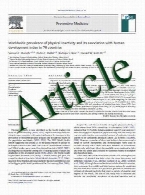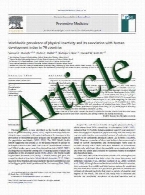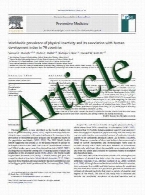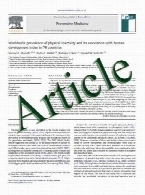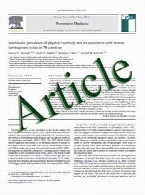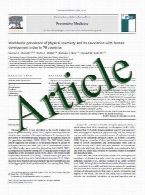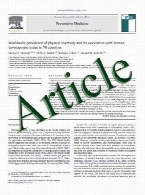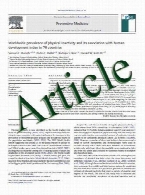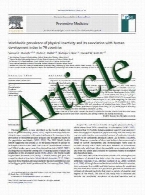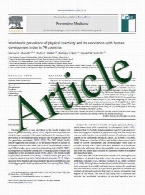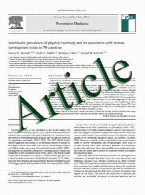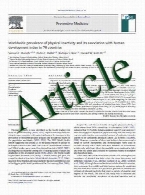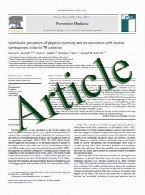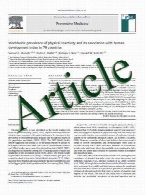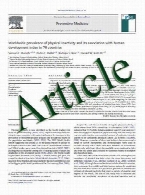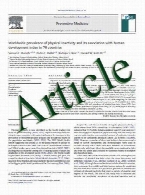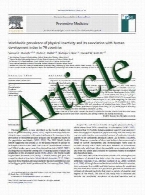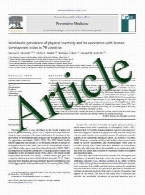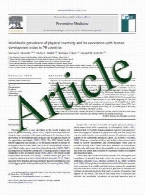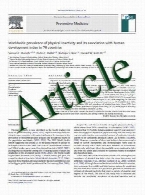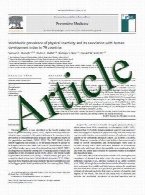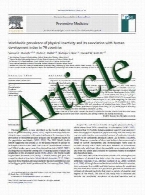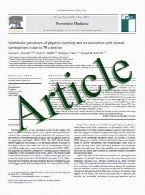

Open-Label Randomized Trial of ...
Background Conivaptan is an arginine-vasopressinreceptor antagonist approved for the treatment of hyponatremia. We hypothesized that administration ...
Outcomes After Nontraumatic Sub ...
Background Primary angioplasty has been introduced for the treatment of symptomatic cerebral vasospasm in patients with subarachnoid hemorrhage (SAH ...
Short-Term Outcome Prediction b ...
Background Electroencephalographic (EEG) features may provide objective data regarding prognosis in children resuscitated from cardiac arrest (CA), ...
Post-Operative Dexmedetomidine- ...
Background Clinical applications of dexmedetomidine (DEX) for neurosurgical procedures have not been adequately investigated. This study aimed to te ...
Medical Management of Compromis ...
Background Brain tissue oxygen (PbtO2) monitoring is used in severe traumatic brain injury (TBI) patients. How brain reduced PbtO2 should be treated ...
Randomized Controlled Trial Com ...
Background Hypertonic sodium chloride solutions are routinely used to control raised intracranial pressure (ICP) after traumatic brain injury but ha ...
Metabolic and Clinical Effects ...
Background Oral supplementation of a specific mixture of essential and non-essential amino acids has been shown to modulate hypercatabolism in patie ...
Critical Thresholds for Transcr ...
Background Transcranial Doppler-derived indices of cerebral autoregulation are related to outcome after TBI. We analyzed our retrospective material ...
Clinical Experience with Transc ...
Background Transcranial Doppler (TCD) ultrasonography to demonstrate cerebral circulatory arrest (CCA) is a confirmatory test for brain death (BD). ...
Vasopressor Use and Effect on B ...
Background We describe institutional vasopressor usage, and examine the effect of vasopressors on hemodynamics: heart rate (HR), mean arterial blood ...
Impact of Intraventricular Hemo ...
Background The purpose of this study is to determine whether intraventricular hemorrhage (IVH) exerts a ‘‘decompressive’’ effect that limits intrace ...
Hospital Mortality of Patients ...
Background Traumatic brain injury (TBI) is a worldwide cause of morbidity and mortality. Pentraxin 3 (PTX3) is a humoral component of the innate imm ...
Acute Kidney Injury in Patients ...
Background There is limited information on the incidence and effect of acute kidney injury (AKI) in patients with severe traumatic brain injury (TBI ...
Juguloarterial Endothelin-1 Gra ...
Background Endothelin-1 (ET-1) is a potent vasoconstrictor and is thought to be responsible for secondary ischemia and vasogenic edema after traumat ...
Consistent Changes in Intracran ...
Background Intracranial pressure (ICP) remains a pivotal physiological signal for managing brain injury and subarachnoid hemorrhage (SAH) patients i ...
Association of CSF Biomarkers a ...
Background Management of severe traumatic brain injury (TBI) focuses on mitigating secondary insults. There are a number of biomarkers that are thou ...
Surface Cooling after Cardiac A ...
Background Effectiveness of cooling and adverse events (AEs) involving skin have not been intensively evaluated in cardiac arrest survivors treated ...
Serial MRI Changes in Comatose ...
Background Neuroimaging may prove useful in identifying cardiac arrest patients destined for a poor recovery, as certain patterns have been associat ...
Abnormal Neuroimaging is Associ ...
Background Abusive head trauma (AHT) is a common condition in children. Little is known in this condition regarding the frequency of seizures, the f ...
Lumbar Catheter for Monitoring ...
Background We investigated the feasibility and accuracy of intracranial pressure (ICP)-measurement by lumbar drainage (LD) catheter in patients with ...
Prevention of Shivering During ...
Background As the practice of aggressive temperature control has become more commonplace, new clinical problems are arising, of which shivering is t ...
Continuous and Intermittent CSF ...
Background We examine two accepted methods of managing cerebrospinal fluid (CSF) drainage in patients following subarachnoid hemorrhage (SAH). The f ...
Impact of Continuous EEG Monito ...
Background Continuous EEG (cEEG) monitoring is being used with increasing frequency in critically ill patients, most often to detect non-convulsive ...
Electrolyte Orders in the Neuro ...
Background To assess the value of the practice of obtaining frequent electrolyte measurements in patients with extended stay in a neuroscience inten ...
Anti-Adrenergic Medications and ...
Background Use of antihypertensive medications is common after intracerebral hemorrhage (ICH). Medications that block adrenergic activation (e.g., b ...


